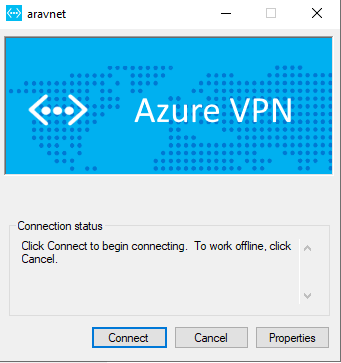

This certificate can also be from your internal certificate authority (CA), but for this article, I will create a self-signed certificate. While it's creating this, we can go ahead and create a self-signed certificate we need to upload to the gateway. As one of the last steps, it will also assign the public IP to the gateway, and the "updating" ribbon will disappear. You'll notice it creates the resource almost straightaway, but it will mention "updating" until it is actually ready for use. This operation can take anywhere between 20 and 45 minutes-yes, that long. New-AzureRmVirtualNetworkGateway -Name vpngateway -ResourceGroupName 4soResourceGroup -Location "Australia East" -IpConfigurations $gwipconf ‑GatewayType Vpn -VpnType RouteBased -GatewaySku VpnGw1 $gwipconf = New-AzVirtualNetworkGatewayIpConfig -Name Gatewa圜onfig -Subnet $subnet -PublicIpAddress $ip $ip = Get-AzPublicIpAddress -Name vpnPublicIp -ResourceGroupName 4soResourceGroup $subnet = Get-AzVirtualNetworkSubnetConfig -Name "GatewaySubnet" ‑VirtualNetwork $vnet $vnet = Get-AzVirtualNetwork -Name 4soNetwork -ResourceGroupName 4soResourceGroup

You can check out the documentation if you want to know more about the different SKUs. The gateway's SKU will be VpnGw1, which is one of the newer SKUs that supports all the gateway features, including things like Border Gateway Protocol (BGP), but it has the lowest data throughput. The following PowerShell snippet will deploy a VPN gateway into our GatewaySubnet that we can use to establish a P2S VPN connection. Microsoft does not recommend or support assigning a network security group (NSG) to the GatewaySubnet, so make sure you don't have any process in place that automatically applies NSGs to subnets.Īfter doing this, we can continue deploying the VPN gateway. Set-AzVirtualNetwork -VirtualNetwork $vnetĪ /27 size subnet is more than enough for our use case. $subnetConfig = New-AzVirtualNetworkSubnetConfig -Name GatewaySubnet ‑AddressPrefix 192.168.0.0/27 If not, make sure you have a virtual network (VNet), and then call the following PowerShell: $vnet = Get-AzVirtualNetwork -Name 4soNetwork -ResourceGroupName 4soResourceGroup If you have followed along with the articles, you will already have a subnet called GatewaySubnet.
#Azure point to site vpn nps windows 10
Windows 10 is going to be seamless on macOS it's a bit more complicated depending on the VPN software used. On our laptop, it depends on the operating system. We will also require a certificate to upload to the gateway to establish our VPN. We can do this with just a few lines of command-line interface (CLI) code. We need to deploy a GatewaySubnet and a virtual network gateway to deploy to that subnet. What is required to set up a P2S VPN? As it turns out, not too much.


 0 kommentar(er)
0 kommentar(er)
